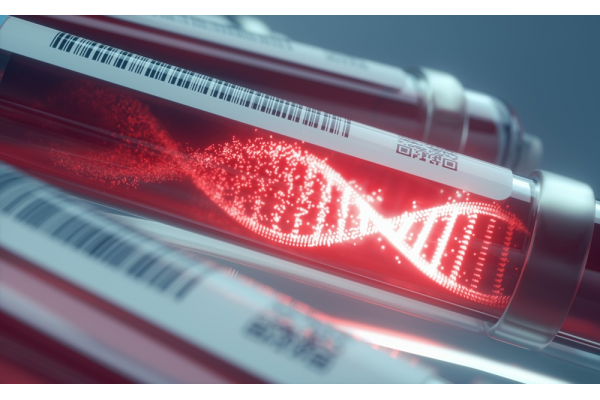New Liquid Biopsy Approach Improves Blood Tests’ Ability to Detect Circulating Tumor DNA
January 24, 2024
Source: https://www.labmedica.com/molecular-diagnostics/articles/294799968/new-liquid-biopsy-approach-improves-blood-tests-ability-to-detect-circulating-tumor-dna.html
 347
347
Tumors continuously release DNA from dying cells into the bloodstream, which is rapidly broken down. This makes it difficult for existing blood tests to detect the minute amounts of tumor DNA present at any given time. Now, a team of researchers has developed an innovative method to amplify the detection of tumor DNA in blood, a breakthrough that could enhance cancer diagnosis and treatment monitoring.

Researchers at Massachusetts Institute of Technology (MIT, Cambridge, MA, USA) have created "priming agents," injectable molecules that temporarily slow the clearance of circulating tumor DNA from the bloodstream. These priming agents target the body’s two main mechanisms for removing circulating DNA: DNases, enzymes that break down DNA in the blood, and macrophages, immune cells that absorb cell-free DNA during blood filtration through the liver. The researchers developed two types of priming agents. The first is a monoclonal antibody that attaches to circulating DNA, shielding it from DNases. The second type is a nanoparticle designed to prevent macrophages from absorbing cell-free DNA, utilizing the cells’ tendency to ingest synthetic nanoparticles. After injecting these agents, the DNA levels in the bloodstream rise for one to two hours before normalizing within about 24 hours.
In experiments with mice transplanted with lung-tumor-inducing cancer cells, the researchers demonstrated that these priming agents could increase the amount of recoverable circulating tumor DNA in a blood sample by up to 60-fold. Once collected, these blood samples can undergo the same sequencing tests used in liquid biopsy samples, identifying tumor DNA and specific sequences that indicate tumor types and potential treatments. The priming agents also show promise in early cancer detection. In mice with a low cancer burden, using the nanoparticle priming agent before drawing blood allowed the detection of circulating tumor DNA in 75% of the mice, a significant improvement compared to undetectable levels without the priming agents.
“A tumor is always creating new cell-free DNA, and that’s the signal that we’re attempting to detect in the blood draw. Existing liquid biopsy technologies, however, are limited by the amount of material you collect in the tube of blood,” said J. Christopher Love, the Raymond A. and Helen E. St. Laurent Professor of Chemical Engineering at MIT. “Where this work intercedes is thinking about how to inject something beforehand that would help boost or enhance the amount of signal that is available to collect in the same small sample.”
“One of the greatest hurdles for cancer liquid biopsy testing has been the scarcity of circulating tumor DNA in a blood sample,” added Viktor Adalsteinsson, director of the Gerstner Center for Cancer Diagnostics at the Broad Institute. “It’s thus been encouraging to see the magnitude of the effect we’ve been able to achieve so far and to envision what impact this could have for patients.”
By editorRead more on
- Multiple batches of quadrivalent influenza virus split vaccine have been sub-packaged and submitted for lot release approval; expected to be released to the market soon after approval December 12, 2025
- Ab&B Bio-Tech CO., LTD. JS Lyophilized Human Rabies Vaccine Initiates Phase III Clinical Trials December 12, 2025
- The ‘Sweetest’ HPV Vaccine Market is Gone | Haibin Interview December 12, 2025
- InnoCare Pharma announced that its first independently developed next-generation TRK inhibitor, zoletrazinib, has been approved for marketing in China December 12, 2025
- Is PD-1/VEGF dual antibody + ADC becoming the standard configuration? December 12, 2025
your submission has already been received.
OK
Subscribe
Please enter a valid Email address!
Submit
The most relevant industry news & insight will be sent to you every two weeks.



